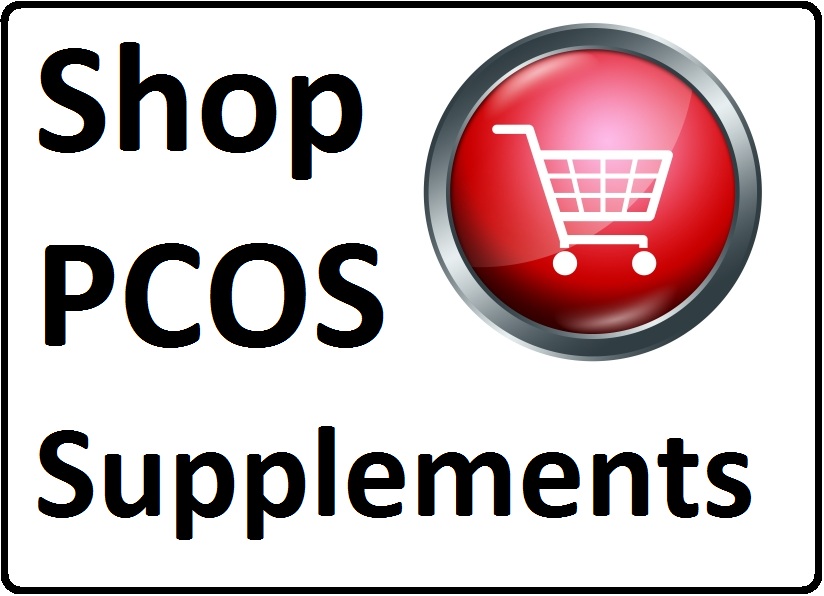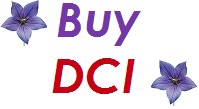
“Cinnamon reduced serum glucose, triglyceride, total cholesterol, and LDL-cholesterol levels in people with type 2 diabetes.”
Insulin-like biological activity of culinary and medicinal plant aqueous extracts in vitro. J Agric Food Chem 2000 Mar;48(3):849-52.
It is important to note that there are two main types of Cinnamon – Cinnamomum zeylanicum (ceylon cinnamon) and Cinnamomum cassia. Although both type of cinnamon have an effect on blood sugar regulation, Ceylon cinnamon is the safest one to use medicinally as it has very low levels of coumarin in it, between 2 and 5 parts per million, around 1000 times less than C. cassia. The levels in Ceylon cinnamon are deemed to be generally safe at therapeutic doses. Some studies have found that C. cassia has a stronger effect on blood sugar regulation, however this may be more due to it’s insulin mimetic action rather than increasing insulin sensitivity, which is more beneficial to those with insulin resistance diseases such as PCOS and type II diabetes.
A study published in the British Journal of Nutrition in 2012, has, however, found no significant differences between 6 grams of C. zeylanicum and a placebo on either blood glucose or insulin levels over 3 hours after an oral glucose tolerance test. The cinnamon was given at the same time as the 75 gram glucose challenge, however, so it is possible that results may differ if the cinnamon were to be administered prior to the glucose challenge or for a longer period of time beforehand.
Cinnamomum cassia is a much cheaper form of cinnamon commonly sold for flavouring food and is not appropriate for medicinal use in the powdered form. This is the cinnamon which has higher levels of coumarin in it, and about which people have been warned to keep consumption under 5 g a day for a 61 kg adult. 5 g or 2 teaspoons each day may be too much for those of a very slight build.
The simple answer: cinnamon tea!
Cassia cinnamon contains a chemical compound called coumarin which is a precursor to several blood thinners, including coumadin, otherwise known as Warfarin. Coumarin also suppresses appetite to some extent. Excess coumarin consumption can damage the liver and there is concern that using cassia cinnamon for therapeutic reasons may do more harm than good in the long term. The good news on that front, however, is that the compounds in cinnamon which are beneficial to blood sugar regulation are water-soluble, whereas coumarin is not.
The German Federal Institute for Risk Assessment has established a tolerable daily intake of 0.1 mg coumarin per kg body weight, but also advises that, if this level is exceeded but only on a short term basis, there is no threat to health. If however, you take a water based extract of cinnamon (i.e. steep it in hot water and drink it as a tea, hot or cold) the coumarin will be left behind as it is soluble only in alcohol and lipids (fat) whilst the substances that work to regulate blood sugar are water-based.
An appropriate amount of cinnamon will vary depending upon the severity of insulin resistance, body weight etc, but ranges from 1 gram to 6 grams. This is equal to between about 1/4 teaspoon and 1.5 teaspoons, as cassia powder weighs 0.56g/cc.
What Does it Do and How Does it Work?
Cinnamon contains some polyphenolic compounds called procyanidins (Type A) which are insulin mimetics – they mimic the effect that insulin has in the body. It also inhibits certain enzymes in the intestinal tract that convert carbohydrates into glucose, reducing the glucose load from whatever you are eating. The chemical compound in cinnamon which is responsible for its insulin-like activity is a water-soluble substance called methylhydroxychalcone polymer, or MHCP if the former doesn’t roll lightly off your tongue. MHCP has an essentially identical action to insulin in the body. It works synergistically with insulin to increase the glucose uptake by cells and also to increase the rate of glycogen synthesis. Glycogen is a polymeric form of glucose which is stored by the liver and muscles for use during times of extreme demand, such as exercise, or if it’s been a long time since a meal and blood sugar levels are running low.
Cinnamon, or MHCP to be precise, has also been found to increase insulin sensitivity, probably the most important aspect of insulin resistance. If you remove insulin resistance from the equation, then the cascade of other negative biochemical effects that follows on from this disappears.
One study on cinnamon using 3 different doses (1, 3 & 6 grams a day) found that blood sugar levels decreased by 18-29%. The interesting thing to note, is that whilst the larger 6 gram dose produced a quicker and more pronounced response, the lowest dose lasted longer, continuing 20 days after the cessation of supplementation when the final results where obtained.
In addition to all this though, animal studies do indicate that it stimulates an increase in insulin secretion by 150%. It is important to remember that animals studies sometimes have vastly different results to human studies. It is likely that the effect in humans would at the very least be reduced. Recent studies have found that there is no additional benefit to taking 3 g of cinnamon as opposed to 1 g.
Another positive effect of cinnamon is that it reduces triglyceride and cholesterol levels (which is good for women with PCOS as we are a much greater risk of high cholesterol and triglyceride levels than the general population). Animal studies found that after just 6 weeks of cinnamon supplementation total cholesterol was down by 16%, HDL cholesterol (the good kind) was increased by 55% and triglycerides (fat in the blood) was reduced by 45%. A recent controlled study using women with PCOS as subjects showed a marked and consistent reduction in the HOMA index of insulin resistance when they were given an aqueous extract of cinnamon equal to 1g. By the way, the blood sugar regulating components of cinnamon are all water soluble, so if adding the cinnamon to food is not your thing, you could make tea out of it with the same result. If you are interested in the PCOS study it was published in the July 2007 issue of Fertility & Sterility, titled “The effect of cinnamon extract on insulin resistance parameters in polycystic ovary syndrome: a pilot study.” Pages 240- 243 You can read the abstract here.
Although the jury is still out on whether cinnamon is a good thing or a bad thing for PCOS, I take it myself as I believe that the benefits outweigh the negatives.
Cinnamon is a very potent antioxidant. Just one teaspoon contains 6,956 ORAC units, or Oxygen Radical Absorbance Capacity the measurement unit for antioxidant activity. To put it in perspective, this is more than a whole cup of fresh raspberries (6058 ORAC units). Other benefits include it’s antibacterial and antifungal properties. Early studies in vitro (in petri dishes in laboratories) and in vivo (in animals) have found that cinnamon is active against the fungus candida albicans, which causes thrush, and heliobacter pylori, the bacterium which causes stomach ulcers.
Part of cinnamon’s action on blood sugar may be due to it’s high manganese content.
There is another herb which appears to have a similar effect to cinnamon but without the insulin stimulatory effect: banaba. It might be worth investigating if you find you are not comfortable taking cinnamon. Other things like chromium, which just supports insulin’s action and makes it more effective might be something to consider as well.
 Buy a 1-month supply for just $5
Buy a 1-month supply for just $5
More Information:
Broadhurst CL, Polansky MM, Anderson RA. Insulin-like biological activity of culinary and medicinal plant aqueous extracts in vitro. J Agric Food Chem 2000 Mar;48(3):849-52. http://pubs.acs.org/doi/pdf/10.1021/jf9904517
Jarvill-Taylor KJ, Anderson RA, Graves DJ. A hydroxychalcone derived from cinnamon functions as a mimetic for insulin in 3T3-L1 adipocytes. J Am Coll Nutr 2001 Aug;20(4):327-36.
Khan A, Safdar M, Ali Khan MM, Khattak KN, Anderson RA. Cinnamon improves glucose and lipids of people with type 2 diabetes. Diabetes Care. 26.12 (2003): 3215-3218. http://care.diabetesjournals.org/content/26/12/3215.full
Hlebowicz J, Darwiche G, Björgell O, Almér LO. Effect of cinnamon on postprandial blood glucose, gastric emptying, and satiety in healthy subjects. American Journal of Clinical Nutrition. 85.6 (2007): 1552-1556. http://www.ajcn.org/cgi/reprint/85/6/1552?maxtoshow=&HITS=10&hits=10&RESULTFORMAT=1&author1=hlebowicz&andorexacttitle=and&andorexacttitleabs=and&andorexactfulltext=and&searchid=1&FIRSTINDEX=0&sortspec=relevance&resourcetype=HWCIT
Joanna Hlebowicz, Anna Hlebowicz, Sandra Lindstedt, Ola Björgell, Peter Höglund, Jens J Holst, Gassan Darwiche, and Lars-Olof Almér ‘Effects of 1 and 3 g cinnamon on gastric emptying, satiety, and postprandial blood glucose, insulin, glucose-dependent insulinotropic polypeptide, glucagon-like peptide 1, and ghrelin concentrations in healthy subjects’ Am. J. Clin. Nut., Mar 2009; 89: 815 – 821. http://www.ajcn.org/cgi/content/abstract/89/3/815
Mang B, Wolters M, Schmitt B, Kelb K, Lichtinghagen R, Stichtenoth DO, Hahn A. Effects of a cinnamon extract on plasma glucose, HbA, and serum lipids in diabetes mellitus type 2. European Journal of Clinical Investigation. 36.5 (2006): 340-344. http://www.ncbi.nlm.nih.gov/pubmed/16634838
Qin B, Nagasaki M, Ren M, Bajotto G, Oshida Y, Sato Y. Cinnamon extract (traditional herb) potentiates in vivo insulin-regulated glucose utilization via enhancing insulin signaling in rats. Diabetes Res Clin Pract 2003;62:139-48. http://dx.doi.org/10.1016/S0168-8227(03)00173-6
Verspohl EJ, Bauer K, Neddermann E. Antidiabetic effect of Cinnamomum cassia and Cinnamomum zeylanicum in vivo and in vitro. Phytotherapy Research. 19.3 (2005): 203-206. http://www3.interscience.wiley.com/journal/110511560/abstract
Wickenberg J, Lindstedt S, Berntorp K, Nilsson J, & Hlebowicz J. (2012) Ceylon cinnamon does not affect postprandial plasma glucose or insulin in subjects with impaired glucose tolerance. The British journal of nutrition, 107(12), 1845-9. PMID: 21929834
Oxygen Radical Absorbance Capacity of Selected Foods – 2007; Nutrient Data Laboratory, Agricultural Research Service, United States Department of Agriculture, November 2007 http://www.ars.usda.gov/SP2UserFiles/Place/12354500/Data/ORAC/ORAC07.pdf
July 2007 issue of Fertility & Sterility, t7itled “The effect of cinnamon extract on insulin resistance parameters in polycystic ovary syndrome: a pilot study.” Pages 240- 243 You can read the abstract here: http://www.fertstert.org/article/S0015-0282(06)04555-9/abstract
http://www.life-enhancement.com/article_template.asp?ID=914
http://en.wikipedia.org/wiki/Cinnamon#Cinnamon_and_cassia
http://en.wikipedia.org/wiki/Coumarin
http://en.wikipedia.org/wiki/Cinnamon








